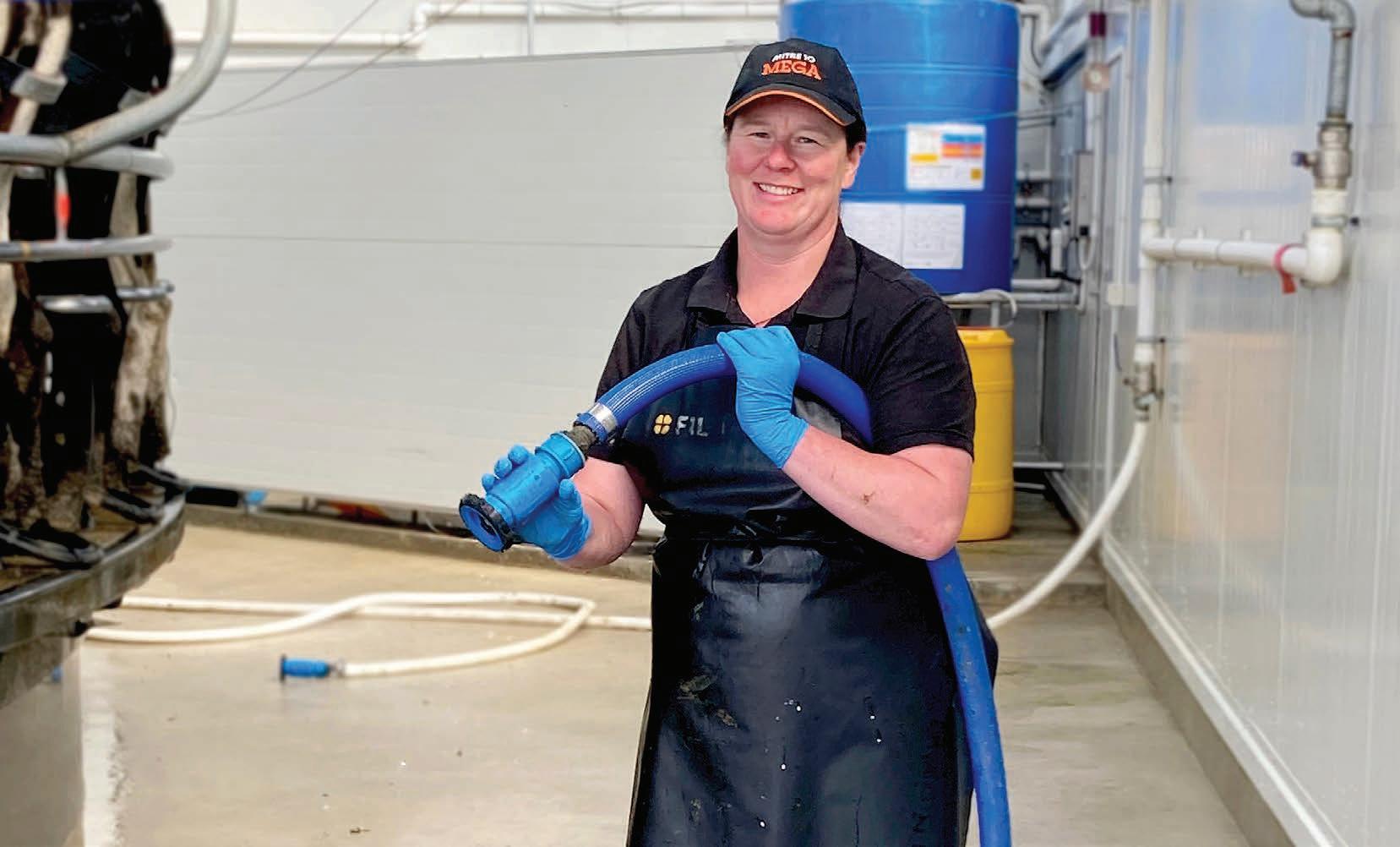
4 minute read
Milk Monitor GDT drops again
Fonterra holds firm despite GDT slump
By Gerald Piddock
Each month the milk monitor delves into the dairy industry and gives us the low-down on the good, the bad, the ugly and everything in between.
Global dairy prices continued their slide through July and August, having fallen 2.9% in the August 16 sale.
Since peaking in March, WMP prices have fallen by 20%-30%, having dropped 10 auctions in a row. In US dollar terms, that’s a drop from $4757 to $3544.
Rabobank analyst Emma Higgins said there is a “fog of uncertainty” lingering over the question of demand, driven by inflation, recession fears and doubts in global economic growth.
“These concerns are not limited to dairy, with a basket of commodities experiencing price volatility.”
Despite the slide, the banks – and more importantly Fonterra – are so far holding firm on their price forecasts, with the dairy co-op retaining its $8.75-$10.25/ kg milk solids forecast.
Having such a wide forecast range is certainly paying dividends for the co-op, allowing it to absorb the price slump while banking on an improvement when production starts cranking up.
Westpac is holding its forecast at $9.25/kg. Global dairy supply remains very weak, and the bank continues to expect Chinese demand to rebound over
All made possible with the support from:
STOP PEG
FINISH Leading Ring
START

Get Ready! Judging Coming Soon

This year both the on-farm and online competitions will be live during the third term school holidays.
Make sure to practice now, so you can ace leading on the day.

WMP prices have fallen 20%-30% since March.
coming months as covid restrictions ease further and the stimulus policy takes hold.
“On that basis and with the NZD/USD still supportive, we still expect a healthy milk price this season,” it said in its midAugust Dairy Update.
The bank believes Fonterra may have increased the downward pressure on prices when it increased WMP volumes going to auction in August and September.
“This move suggests that previously contracted sales have now fallen through as buyers have either been able to point to lower prices elsewhere (for instance, in the US or the EU) or simply that they don’t have the consumer demand to justify the earlier sales contracts. That’s seen product pushed back into the marketplace.”
Rabobank is keeping its $9.25 forecast, saying in its August Agribusiness Monthly that with the added support of a weak NZD/USD, it still expects a healthy milk price this season.
ASB retained its $10/kg MS forecast with economist Nat Keall writing in the bank’s Commodities Weekly publication that the price hinges on prices over the spring and summer months.
“We will need signs of improvement at coming auctions to support this forecast. But on a more encouraging note, prices are still historically high, and a milk price within Fonterra’s appropriately wide (but high) forecast range for next season is very achievable.”
Out on the farm, the season has barely started from a milk collection perspective and most farmers are still concentrating on calving.
Morale has also taken a hammering. Federated Farmers’ confidence survey of 1200 farmers, undertaken in July and published in August showed that 47% considered current economic conditions to be bad, down 55.6 points from January where 7.8% considered conditions to be good.
The drop was blamed on a combination of factors – inflation and supply chain issues from covid-19 and the Ukraine war as well as the pace and direction of government regulations and staff shortages.
That final point cannot be overstated: this is the third season in a row where there have been staffing issues and this, along with all those other factors, has had a cumulative effect that’s being seen now.
On the positive side, the wet weather and generally warmish conditions have seen grass covers take off, lifting the prospects of a potential early spring.
The constant rain through July has well and truly replenished water tables and has saturated the soils, and while it makes for a miserable time out in the paddocks, hopefully most farmers are following proper grazing strategies to protect their pastures.
The covers will also be a welcome relief after many chewed through their supplementary feed reserves in autumn because of the drought. But farmers will still need to plan ahead and ensure they have the necessary feed reserves on hand if the growth suddenly stops.
Those looking at importing feed can again expect to pay high prices and expect shipping uncertainties.
GrainCorp Feeds general manager Daniel Calcinai recently urged farmers to plan ahead as feed availability is affected by global shortages along with slow and intermittent international shipping.
“We are continuing to see the impact of a grain shortage, especially relating to starch-based feeds for this season.
“There may be a few options available in some areas, but generally starch is short until next years’ harvest.”
He said some are choosing fibrebased feeds, such as soyhull or oat hull, complemented with high-energy bypass fats such as polyfat to offset the shortage in starch products.
Moves are also underway by the contracting industry to ensure contracts between contractors and farmers fairly reflect the cost volatility of inputs.
This is being developed after many contractors got burnt last season when the costs of inputs including fertiliser and fuel lifted over the period from when the crop was sown to when it was harvested. For many contractors, those costs jumped 20%-25%.
The two industries have enjoyed a symbiotic relationship and this contract should hopefully see that continue. n










